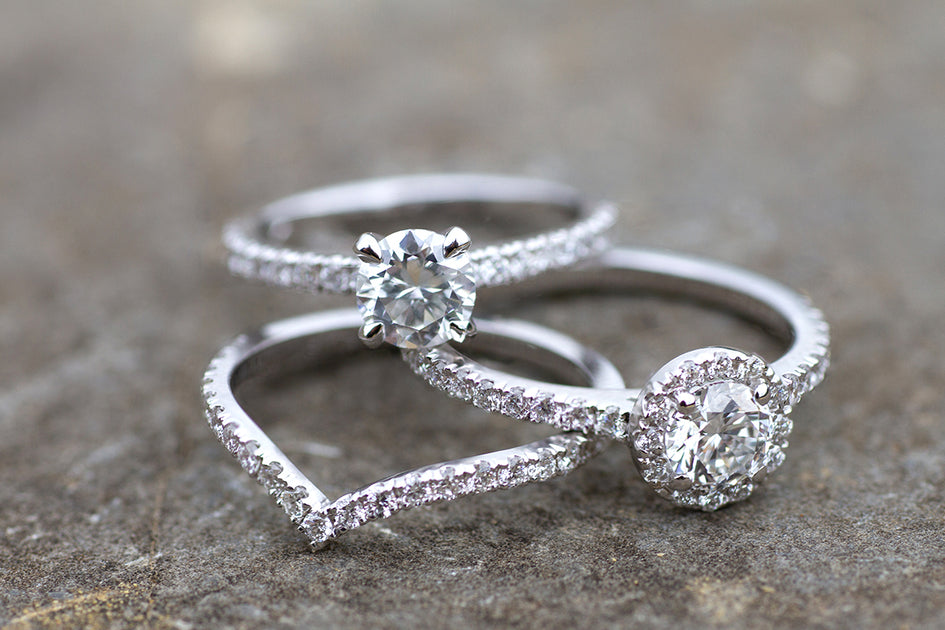Things about Engagement Rings
Things about Engagement Rings
Blog Article
Engagement Rings Fundamentals Explained
Table of ContentsEngagement Rings - The FactsNot known Incorrect Statements About Engagement Rings Engagement Rings - Truths3 Easy Facts About Engagement Rings ExplainedEverything about Engagement RingsWhat Does Engagement Rings Do?
Tension-style setups also supply much far better protection for the gemstone. Most tension-style setups are created round brilliant rubies or other round gemstones, yet they can be modified to fit lots of other forms. The setup can additionally be changed to have accent treasures around the centre stone or to permit a side stone on each side of the centre stone.Is not vulnerable and uses well. Can be customized. Develops a visual fallacy of the centre gems awaiting the air. Have a contemporary layout that contains grace and elegance - engagement rings. Easy to clean and keep. If it has prongs, they can end up being loose with wear. This is easily corrected by having the ring routinely cleaned up and examined by a jeweler.
Everything about Engagement Rings
The first ring with a true tension setup was made in Vreden, Germany in the 1970s. Ursula Exner and widely known carver Walter Wittek collaborated to design and make this very first ring. In the adhering to years, other jewelers designed their own stress settings, in addition to the more protected and functional tension-style setups.

This offers the ring a basic, but elegant charm that works well for both males and females's wedding celebration rings, along with interaction rings. The flush setting is occasionally also called a gypsy setting. We can not state for sure just how it came to have that name, however probably it is because the setup stands for a totally free spirit.
Engagement Rings Fundamentals Explained
Flush settings work well for round, square or rectangular gemstones, however they can be hard to adjust to specific fancy cuts, for instance, a heart-shaped ruby. Maintains the gems secure and safe.
Reminds the proprietor to cultivate a complimentary spirit (engagement rings). Because the gems are set in the shank, they receive a restricted amount of light and generate much less sparkle. Often unwise for heart-shaped treasures and a few other treasures with fancy cuts. Rings with blog here flush or gypsy setups have been around because the late 1800s.
Solitaire involvement rings have just one centre gems on an ordinary great site band. Lots of other involvement rings, however, additionally have accent gemstones.
Getting The Engagement Rings To Work
There are 4 setups that are commonly made use of to hold accent gems. The castle setting gained its name due to the fact that from the side it looks like the battlements on top of a castle wall surface. This setting is also regularly called the scallop setup. Castle setups are made directly on the shank of the ring.
The prongs in a castle setting can be right up and down with straightforward spherical suggestions or they can be cut at an angle so that they look like fishtails. Castle settings are extremely functional.
All About Engagement Rings
The steel sides of the castle setting are always reduce reduced, generally in a scallop pattern. This allows more light to reach the accent treasures and enhances their luster. If it is well made, the low scalloped edge of the castle setting can also create a visual fallacy. It allows the sides of the gems to be conveniently seen and develops the impression that the treasures are being kept in an undetectable setup.
Increases light refraction and sparkle. Catches interest with its shimmers. Creates the illusion of an unnoticeable setting. Has a classy charm. Easy to clean and requires little maintenance. The little prongs can end up being loosened. We recommend that rings with the castle setup be cleansed occasionally by a jeweller, to ensure that the prongs can be checked.
The prongs on a castle setup can capture on apparel, yet this is unusual due to the fact that the prongs are smooth. The castle setting can be made use of to make gorgeous infinity rings.
Facts About Engagement Rings Uncovered
The grain setting is a very safe setup. The sides of the network protect the accent gems from bumps and scrapes and the handmade prongs hardly ever come to be loose. One disadvantage of the grain setup is that the gemstones receive much less light because they are put down in the network. This causes the gems generating slightly less brilliance and glimmer.
Every gem in the grain setting is surrounded by 4 glossy grains that are level with the top of the shank. These grains capture the light and release their very own glimmers everywhere. The beads' glimmers with each other with the luster and sparkles generated by the accent treasures bring the bead readying to life and give it continual glimmers.
They can use it to make eternity rings, in addition to to enhance the easy shank or more elaborate split shank that some involvement rings have. In the standard grain setting, the accent gems are embeded in one straight line. Occasionally, though, jewellers will certainly enhance the sparkle on an engagement ring by adding 2 or more identical lines of bead collection treasures.
Report this page